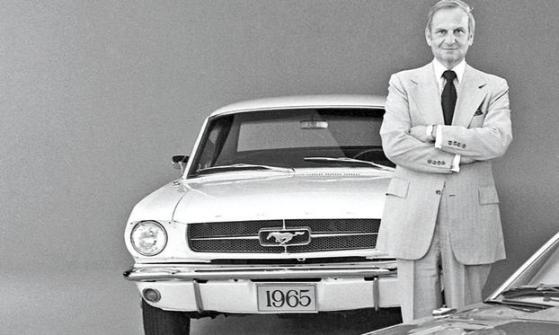
Americans have a long-running love affair with the automobile. We are among the most mobile people on earth thanks in part to our ability to grab car keys off the counter, stride out to our ride, crank the engine, and drive off to parts unknown for our latest adventure. The car culture in America is unique and pervades every societal aspect - gender, heritage, income, and even political affiliation.
This cornucopia of enthusiasts lost an icon this year with the passing of Lee Iacocca last July at the age of 94. Born and raised in Allentown, Pennsylvania, he graduated from the local high school and went on to university in nearby Bethlehem. These formative years in the heart of the rustbelt seemingly preordained him to automotive greatness. He started his career at Ford in 1946 at a very youthful 22 and steadily rose through the ranks based on his work ethic, style, and unerring sense of salesmanship. Iacocca eventually became the driving force bringing the Mustang to market. In the early '60s, Ford's CEO, Henry Ford II, was in no mood to launch a new car product so soon after the stunningly dismal failure of the Edsel. Iacocca was undaunted. A born visionary, an engineer by training, and a salesman at heart, he cajoled Ford into greenlighting the project.
The first Mustangs were very affordable at just under $2400 and the dealerships around the country were soon inundated with orders. Mustang options were initially basic but continued to evolve, allowing for a high degree of customization. Iacocca understood the special connection between a car and its driver and that drivers could be exceedingly particular about their ride. The Mustang became an automotive chameleon. Options allowed for a mild 6-cylinder grocery-getter, an 8-cylinder highway cruiser, or an all-out big block road warrior. Cruising down Route 66 or the PCH? Choose the convertible. Want to grab all the wistful looks of the car crowd at the local strip? Go for the fastback with racing stripes.
Lee Iacocca's pony car permeated all aspects of Americana. Mustangs shared screen time with James Bond, set the gold standard for car chases with Steve McQueen's Bullit, and were twice featured on US postage stamps. In racing pursuits, just months after its debut and with zero trackable stats in the racing arena, Mustangs took first and second place in their class in the Tour de France, breaking Jaguar's 5-year winning streak. Similar success followed with the NHRA and the SCCA Trans-Am circuits.
A particular pale yellow 1970 Mustang also afforded my awkward teenage self a few brief tastes of racing glory at the track and behind the high school. It also provided countless hours of bonding time with Dad as we wrenched on seemingly every bloody bolt under the hood. This singular car is as old as I am, and while we've both got a lot of miles on us, we're now both considered classics (not antiques). It's been my grocery getter, drag racer, and highway cruiser. It's been up and down the East coast and made the I-10 run from Florida to California. This was the car I drove to get my driver's license. It's what I drove on countless weekend beach runs and to prom and college. It was my only source of street cred on my first nervous dates with Andrea. My life has been inexorably intertwined with Lee Iacocca's little pet project. I doff my hat to you, sir for gifting us with this uniquely American, amazing machine and adding a small quotient of coolness to my life.
By the way, speaking of Americana, here's another cultural artifact that would not exist if not for Iacocca and his Mustang. The Great Wilson Pickett struts his stuff with his 1966 cover hit that eventually earned a spot on Rolling Stone's 500 Greatest Songs of All Time.
No comments:
Post a Comment